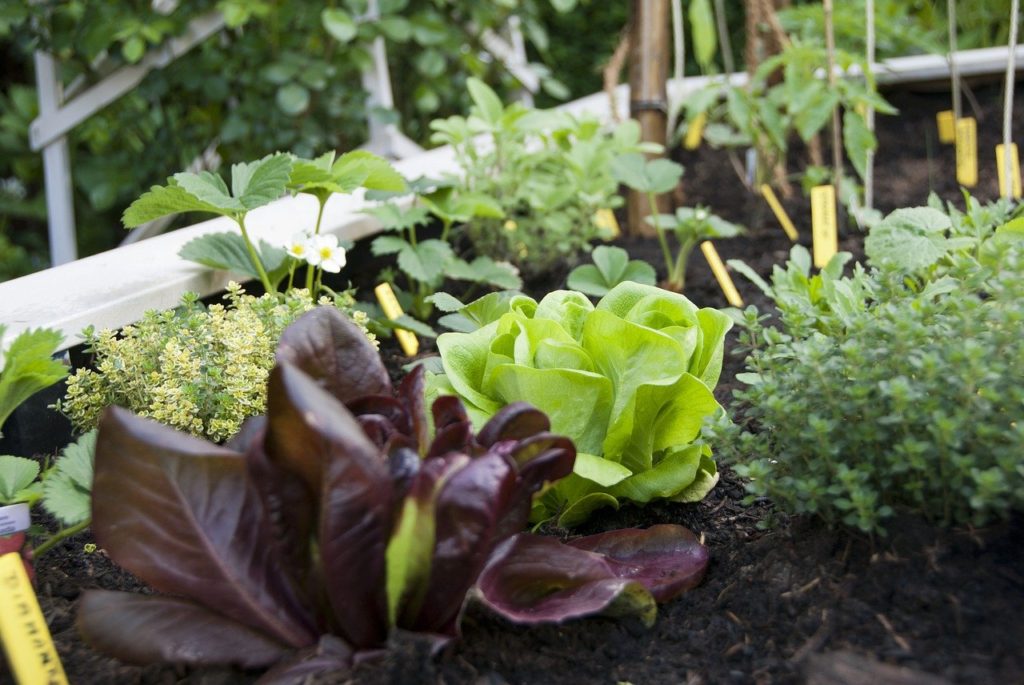
Gardening, farming, and being food self-sufficient are topics that have grown in popularity over the past few years. Since the COVID 19 pandemic hit, people have seen the realities of limited supplies on grocery store shelves. As a result, they have become interested in learning how to grow their own food.
If you’ve dreamed of becoming a farmer or growing some of your own food but don’t have the experience, you might think you need hundreds of acres of land to start. Most people don’t have the money or time to purchase land so they give up on their dream or postpone it until “someday”. The good news is that you can start growing your own food and creating a “micro-farm”, (a farm on 5 acres or less), right in your own backyard. Even if you live in the middle of a city. You will be amazed at what you can produce on a small amount of land.
Follow the rules
Before starting any growing or pre-farming adventure, check the laws of your local government. Be familiar with the regulations for planting vegetables in your yard, what kinds of animals you can have, and the number of animals. Even if there are restrictions, there should be enough freedom to get a few things started.
1. Grow a garden
Chances are If you are interested in micro-farming, you’ve probably done some gardening in the past. Your garden doesn’t have to be very big to receive the benefits of growing your own vegetables.
Know your plant hardiness zone in the US or outside the US to determine which plants grow best in your state/country. There are garden calculators that will help determine the number of plants you need based on the number of people in your family. You will also find lists of plants that grow well in your hardiness zone.
Even if you don’t have the garden space to grow all the vegetables your family will eat in a year, don’t let that stop you. If you’re just starting out, set a goal to grow ¼ of your vegetables. It’s very satisfying and gives you a sense of pride to sit down to dinner with a plate full of veggies you grew yourself.
2. Freeze, dry, or can excess veggies and herbs
One way to stretch out your growing season is to plan on growing a little extra in our garden. You can preserve your vegetables by freezing, drying or canning. Some people are a little intimidated by the canning process. If canning seems like a bigger task than you want to tackle right now, try freezing your vegetables. Some vegetables, like tomatoes, can be frozen but don’t hold their flavor like fresh tomatoes. Frozen tomatoes are good for soups, stew, and sauces. Some vegetables that freeze well are peppers, okra, (a good soup thickener), corn, peas, squash, and green beans.
An excellent resource for food preservation information is the National Center for Home Food Preservation. They are considered one of the leaders in food preservation education. Their website is full of valuable information that will teach you all kinds of food preservation techniques and how to do it safely.
3. Raise chickens for eggs
Make sure your city allows backyard chickens and the maximum number you can have. Typically in places that do allow chickens, they won’t allow roosters. Roosters not only crow at the crack of dawn, but they also crow whenever they feel like it. Sometimes it’s 3 o’clock in the morning. They are very loud and will put unnecessary strain on neighbor relations.
Chickens are easy to keep and entertaining to have around. If you have a fenced back yard you can even let them “free-range” during the day. It’s best to have a secure shelter for them, especially at night, to keep them safe from predators.
It’s exciting the first time you go to the coop and find your hens have started laying and gratifying to pick up a few eggs to fix for breakfast. Few things taste better than fresh eggs and it’s especially true when they are chickens you know personally.
4. Raise chickens for meat
If you raise chickens for meat, be sure that you have someone willing to butcher them or that you are willing to butcher them yourself. Fresh chicken is delicious, but not everyone can bring themselves to be the butcher.
You can find almost anything you want to know about chickens on the Backyard Chickens website.
5. Raise rabbits for their meat and fertilizer
Many people enjoy eating rabbit meat which has many health benefits. It’s low fat, nutrient-rich, and according to this article on Livestrong, is high in healthy fats.
Rabbits also provide valuable fertilizer through their manure. Rabbit poop is “cold manure” that doesn’t need to be composted before it can be put directly on your garden. Some people even sell bunny poo to help supplement the cost of rabbit food and earn a little extra money.
6. Have a composting worm bin
Red wiggler worms can be used to help compost food scraps from your kitchen. They eat kitchen scraps, like eggshells, vegetable peels, and coffee grounds. Worm castings (AKA worm poop) is a valuable fertilizer for your garden.
Worms love bunny poo. You can put your box of composting worms underneath the bunny cage and the worms will turn rabbit manure, along with your kitchen scraps, into nutrient-rich compost to use in your garden.
You can order worms that will be mailed to you from Uncle Jim’s Worm Farm. They also have a ton of information on how to get started composting with worms. You don’t need a lot of room for composting worms and they can even be kept indoors.
7. Keep honey bees
There is a lot of misinformation about Bees. Bees are amazing creatures and a wonderful addition to any micro-farm or self-sufficient lifestyle. Many people are afraid of bees, some because they are deathly allergic and others because they’ve read about Africanized bees and think all bees are aggressive, psycho killers. That is not the case.
If you have always wanted to try beekeeping but thought it was impossible to do, you should look for more information. It can be moderately expensive to buy equipment in the beginning, but there are ways to cut costs as you go. You can buy unassembled beehives and assemble them yourself, or find free bee hive plans online and purchase the materials to build them. After you get some experience in beekeeping, you can get bees for free by trapping bee swarms in the spring. Check out HorizontalHive.com for detailed, free plans for building different types of beehives.
You don’t have to live in rural areas to keep bees. However, it’s a good idea to see if your city has laws against keeping bees. You may also want to inform your neighbors about your plans – or not. If you think you might get some resistance, you can build special areas that will keep your hives concealed from your neighbors.
There are many reasons to keep bees, including the benefit of pollinating your garden. One of the most exciting and satisfying parts of keeping bees is being able to harvest honey. Honey lasts forever and can be used for many things besides just sweetening tea. This article explains some health benefits and additional uses for honey.
If you’ve dreamed of farming or being able to grow your own food, don’t let preconceived ideas keep you from doing it. You don’t have to wait until you have hundreds of acres and a lot of money and equipment. You can start by making your backyard a micro-farm, with a garden, a small flock of chickens and a few composting worms. This could be the first of many baby steps that lead to a more self-sufficient life.
Resources:
National Center for Home Food Preservation
Urban Farmer Seeds Crop Calculators
Healthline.com 9 Unexpected Uses for Honey
Save

This is a lovely collection of information! Makes me want to start something in my garden too.
Thank you Laura
Thank you, Lynne!